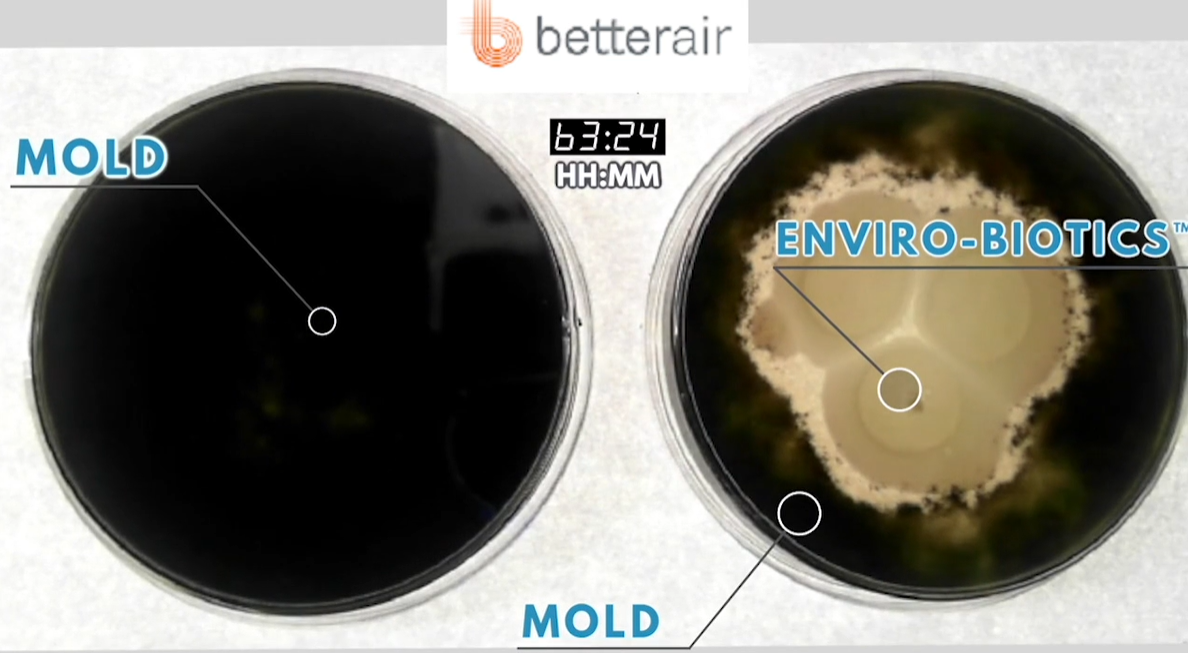What are Probiotics for the Air?
Probiotics have been around for a long time, even millenia! Probiotics are live, active microorganisms ingested to alter the gastrointestinal flora for health benefits. They often are referred to as good bacteria in the gut and compete with bad bacteria to support the body in establishing optimal digestion and aid immune function. (An Introduction to Probiotics) Now, they didn’t always exist in “capsule” form. In fact, if you look in the refrigerated section of the grocery store, probiotics are the cultures found in kefir, kimchi (fermented cabbage), kombucha (a fermented tea), miso (a fermented soybean paste), pickles, sauerkraut, tempeh (another fermented soybean food) and yogurt. The common thread of all these foods includes fermentation, which is the breaking down of organic substances through the action of enzymes. Bacteria are the carriers of these enzymes, so as the fermentation occurs, these good bacteria increase. When we ingest fermented foods, the bacteria populate our intestines for better digestion. (Check out our article on fermentation!)
Now that you know probiotics have been in foods since antiquity, probiotics for the air and surfaces in your home is a relatively new concept. BetterAir was the first company to use probiotics in an air purifier. According to BetterAir President Tom Staub, “Allergens, pathogens, germs etc. do not grow in the air, but are born and propagate on surfaces and objects. Since they are microscopic they are then propelled into the air by minute movements of air such as the wave of a hand across a tabletop or fall off a foot upon stepping onto carpet.” BetterAir’s proprietary probiotic formula consumes organic allergens often found inside the built environment like pollen, mold spores, pet dander, and dust mite fecal matter. Staub continues, “They also consume the food sources that germs and pathogens need in order to multiply and propagate thereby minimizing their presence. Fewer pathogens on surfaces and objects results in cleaner air, surfaces and objects. “ (BetterAir: The First Air Purification Device To Utilize Probiotics To Clean Your Home’s Air)
Considering that probiotics contain live bacteria, an air purifier that sprays them into the air may be, well, a little scary to some! Rest assured, however; BetterAir’s proprietary formula’s active ingredient consists of naturally occurring (non-GMO), safe and effective Bacillus strains.
Bacillus encompasses a large number of bacteria types, and some are harmful, but many are helpful, such as the medically useful antibiotics produced by B. subtilis (bacitracin). (bacillus bacteria) In order to produce and market Enviro-Biotics, BetterAir passed all the required tests by EPA standards at EPA-certified GLP (Good Laboratory Practice) labs, became EPA registered (94339-1, August 2021), and the US Food and Drug Administration (FDA) declared Enviro-Biotics as GRAS – Generally Recognized as Safe. Finally, it has been certified by many government and private healthwatch organizations. So, the liquid dispersed by BetterAir systems is safe for people, pets and plants.
The following video screenshot shows how a petri dish treated with drops of Enviro-Biotics (right) forms a barrier that stops black mold from growing, unlike the untreated dish on the left. This is visual proof of what their technology claims: microscopic sized Environmental Probiotics form a protective layer of microflora on all surfaces and objects, where the probiotics agents deny pathogens (mold and bacteria) access to nutrients (food), therefore obstructing and disabling growth of pathogens on these surfaces and objects. In addition, and concurrently, Enviro-Biotics consumes harmful organic particles that are the source of allergies and diseases. Since dust and dander will be in every household to some extent, by introducing good bacteria, these allergens are used to feed the good and starve the bad bacteria.
Source: The Power of Enviro-Biotics
If your home is in an exceptionally dusty or polluted area, BetterAir has also combined a probiotic air purifier and a HEPA air purifier.
Another way to use probiotics is to clean with them. HomeBiotic has spray bottles for spritzing the air and surfaces that are smelly, which starves bad bacteria and protects from its regrowth for up to 5 days. Their cleaning bundle has tablets that dissolve in water to make a non-toxic, powerful cleaning solution that is safe to the homebiotic bacteria they promote, and nano-sponges that clean without spreading germs around your home. The tablets are made of washing sodas and citric acid, which are completely safe for people and pets. Citric acid in the right dose, for example, is an EPA-approved, non-toxic sanitizer that kills norovirus. However, citric acid should not be used on natural stone or marble, wood, delicate surfaces or electronic screens because it may damage them.
Although probiotics are not a “silver bullet” for all airborne contaminants, they may help allergy sufferers and may help you to maintain health better when seasons change and new contaminants come into the home. It’s like your gut: taking probiotic supplements feeds the good bacteria and doesn’t leave a lot of room for the bad to multiply out of control. Therefore good effects of probiotics in the home depend on consistent use over a period of time, and avoiding chemicals like bleach that kill both good and bad bacteria indiscriminately. With new technology advancing everyday, it probably won’t be long before we can “see” exactly what is colonizing our homes and bodies, and then get tailored solutions to optimize it. Since probiotics already live outside in the natural world (in soil, wood and other natural surfaces), like ions are present in fresh outdoor air, bringing probiotics indoors could be a good idea for keeping our homes healthy with natural methods and substances!
Photo by Anders Jildén on Unsplash


